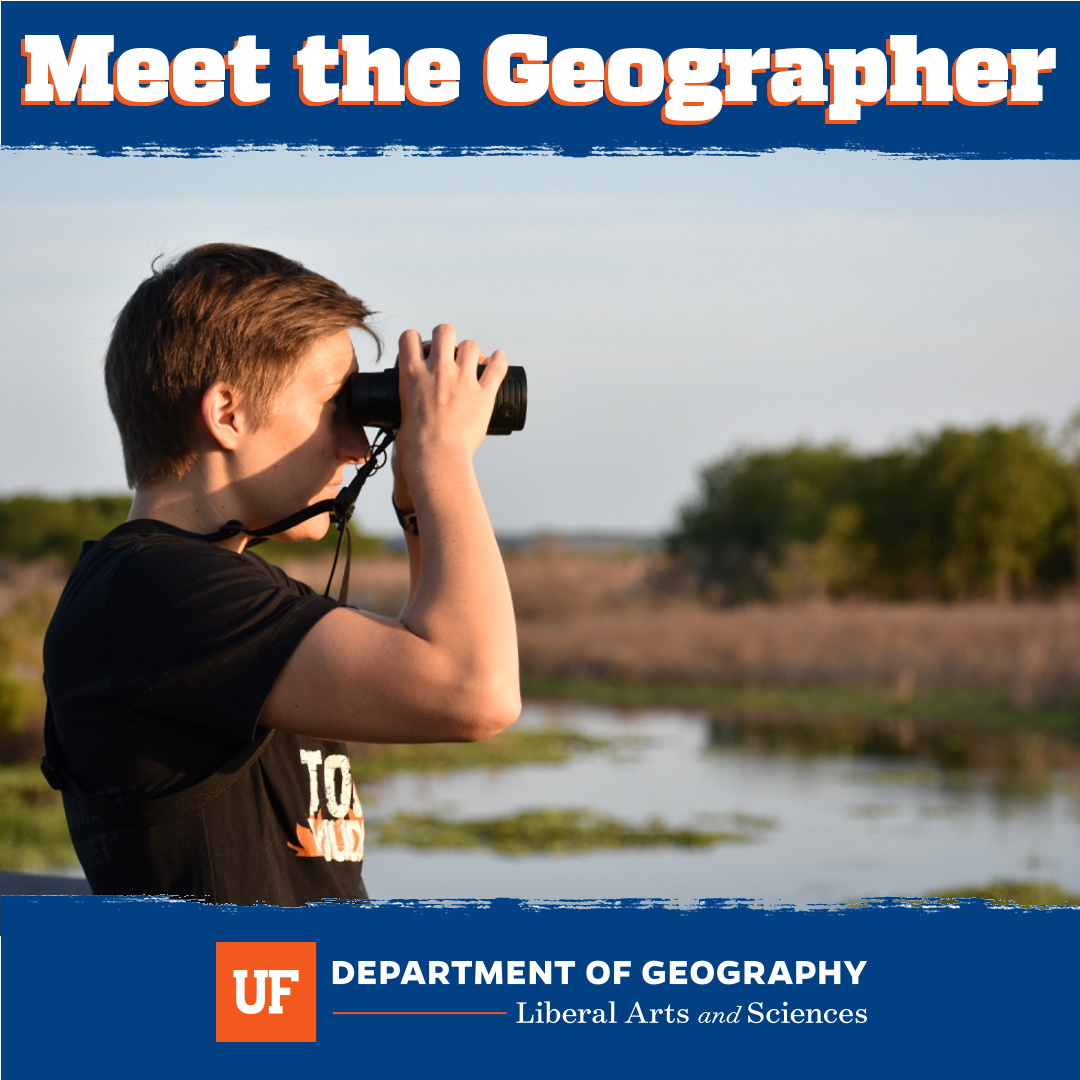
Morgan Walker
Pronouns: she/her or they/them
Spatial Epidemiologist and GIS Lab Manager
Spatial Epidemiology & Ecology Research Laboratory (SEER Lab)
University of Florida
Adviser: Dr. Jason Blackburn
Focus Area:
Research Statement:
I am broadly interested in disease ecology and spatial epidemiology. My research focuses on transmission and spread of infectious diseases, particularly zoonoses. My most recent work has concentrated on the fine-scale landscape geography and animal behaviors that lead to transmission of anthrax, an environmental pathogen. The goal of research like this is to understand disease dynamics and consequently develop disease reduction and mitigation strategies that are appropriate for local circumstances. In addition to zoonotic diseases, I’m interested in conservation biology and ecoimmunology.

Who is she?
Morgan is a Spatial Epidemiologist and GIS Lab Manager in the Spatial Epidemiology & Ecology Research Laboratory (SEER Lab) who earned her master’s degree in the Geography Department. She trained as an ecologist and is originally from Georgia.
How did she get here?
Morgan grew up near Atlanta in Powder Springs, GA. She spent her weekends volunteering at a hippotherapy farm where she could help kids with disabilities and work with horses as well. Morgan recognized that her love of animals meant she should work in the life sciences. During high school, Morgan coached swim teams at the neighborhood pool and played soccer for her high school and in a travel league – she was recruited to college athletics, but elected to focus on academics at the University of Georgia.
In Morgan’s freshman year, her ecology professor recruited her as a summer field technician. That first summer, Morgan worked at UGA’s Skidaway Institute of Oceanography in Savannah studying lethal parasites in oysters. After the summer, Morgan returned to UGA and continued to study oysters in the lab, conducting a series temperature trials.
The following summer, Morgan’s research took her to Maine’s Shoals Marine Lab, where she studied parasites that infect marine snails and crabs. Morgan enjoyed marine research, but realized that she was increasingly fascinated by disease systems.
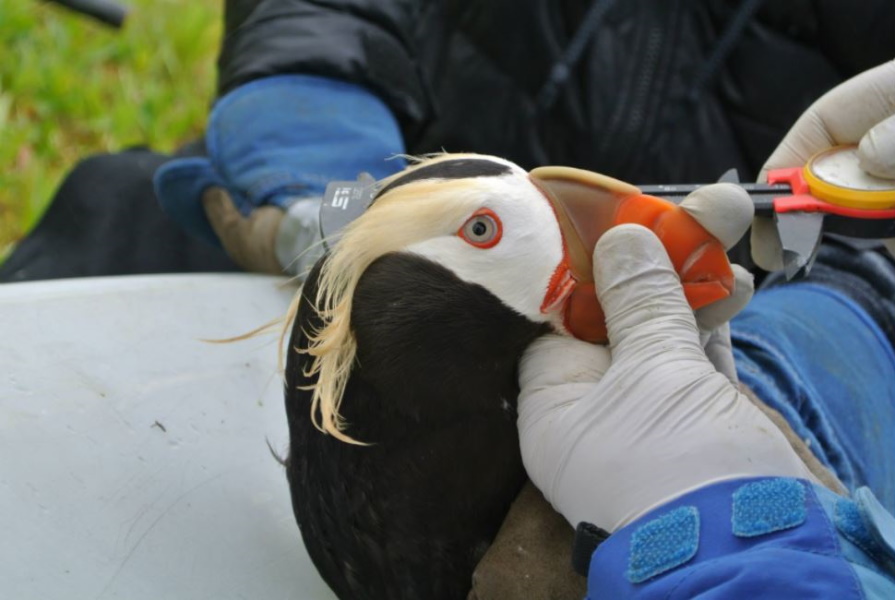
For her third field summer, Morgan traveled to Middleton Island in the Gulf of Alaska where she examined the health parameters of five species of seabirds on the island to assess the cause of their population fluctuations. She went on to write her senior honors thesis on part of the project, titled “The prevalence of haemoparasites in the nesting seabirds of Middleton Island, Alaska.” One day when she had some downtime, Morgan went for a bike ride with her camera – she spotted a bald eagle in its nest and got a little closer to take a picture. That was when Morgan discovered that a nesting bald eagle considers 150 meters from their nest to be TOO CLOSE. As the eagle swooped and attacked Morgan, she sheltered behind her bike, and managed to get away unscathed. When Morgan returned to the field station, her colleagues were unphased – letting her know that attacks by bald eagles were a common occurrence on the island.

When Morgan graduated from the University of Georgia with a B.S. in Biology and B.S. in Ecology, she traveled around Italy for a few months with the Workaway program – trading labor for lodging and learning a smattering of romance languages. That January, Morgan moved north to Rimouski, Quebec on the south bank of the St. Lawrence River to join a team from the University of Wisconsin that was studying the ecoimmunology of chickadees. During the winter, she tested the immune response of chickadees and during the warmer months, she manipulated chickadee brood size to assess how that influenced parental investment in the young, resulting in Who pays the bill? The effects of altered brood size on parental and nestling physiology, which was later published in the Journal of Ornithology.
What has she been doing at UF?

After a good (though cold) field season in Quebec, Morgan took a job as a Biological Technician with UF’s Cervidae Health Research Initiative in the department of Wildlife Ecology & Conservation. While working at CHeRI – capturing cattle egrets, trapping and sampling feral swine, and collecting ticks in the field – Morgan was recruited by Dr. Jason Blackburn to join the Spatial Epidemiology & Ecology Research Laboratory (SEER Lab) as a Research Assistant while pursuing a Master’s degree in Medical Geography.
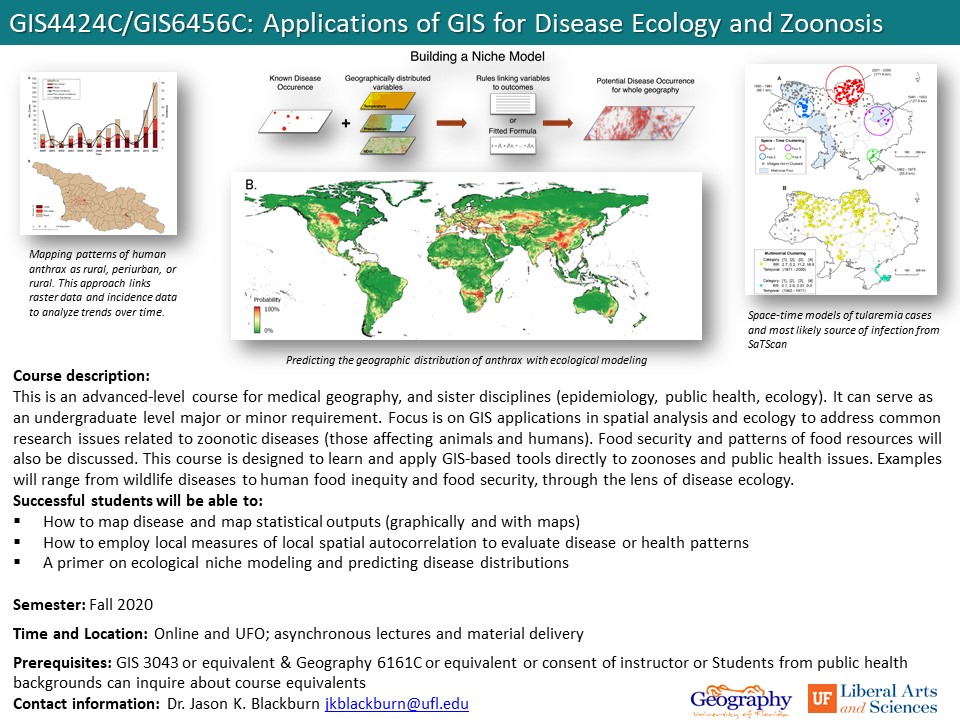
Although Morgan didn’t teach courses during graduate school, she appreciates the spatio-temporal methods she learned in Dr. Blackburn’s Applications of GIS for Disease Ecology and Zoonosis, which she uses in her day-to-day work. “I think geography is a great fit as a multi-disciplinary science that allows me to study disease dynamics from many perspectives and scales,” says Morgan. “During Dr. Simmons’ Geographic Thought course, I realized that I had been studying spatial questions all along.”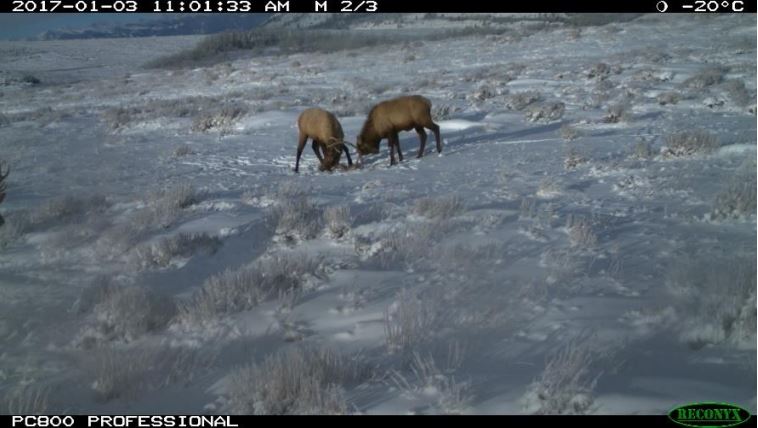
As a Master’s student, Morgan traveled to SEER Lab’s field site in Montana to set up camera traps that monitored bison and elk uses of carcass sites to determine how grazing herbivores might influence anthrax transmission. This research was just published as Ungulate use of locally infectious zones in a re-emerging anthrax risk area in Royal Society Open Science.
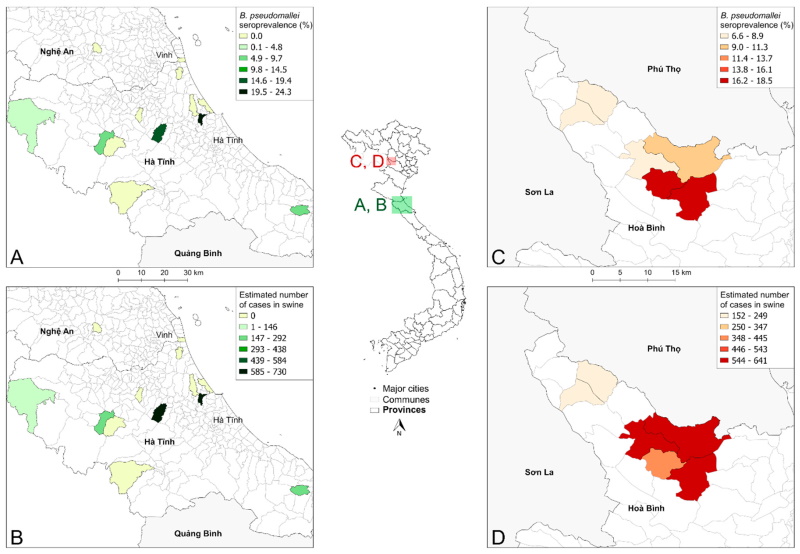
When Morgan graduated with her Master’s Degree, Dr. Blackburn hired her as a Spatial Epidemiologist and the GIS Lab Manager for the SEER Lab. She conducted a spatial analysis of Burkholderia pseudomallei prevalence in swine in Vietnam which contributed to Distribution of Serological Response to Burkholderia pseudomallei in Swine from Three Provinces of Vietnam with collaborators from the SEER Lab. Stay tuned for even more of Morgan’s spatial epidemiology publications in the coming months.
How has she been holding up during the pandemic?
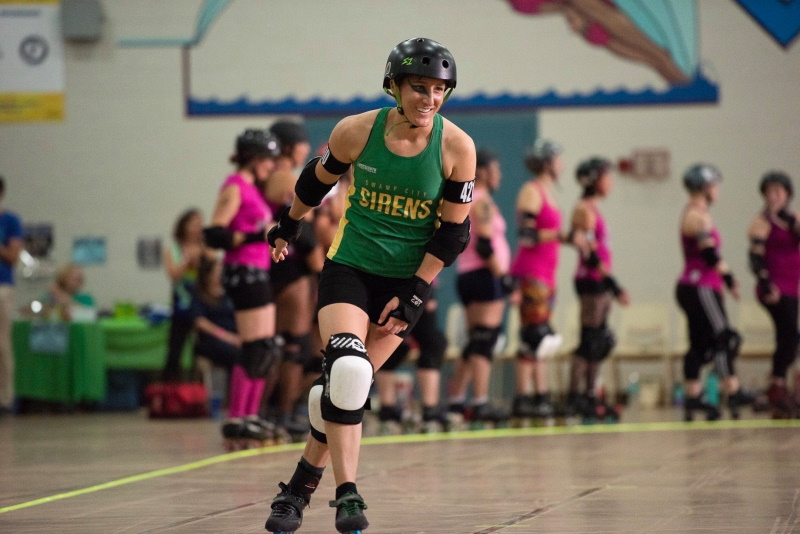 Morgan used to work on campus, but since the pandemic she has been doing all her work from home – one of the benefits of having moved from bench science to data science. While she misses visiting friends and family, and playing roller derby, the Gainesville Roller Rebels have been keeping up with remote training, so she’ll be ready when they return to the track.
Morgan used to work on campus, but since the pandemic she has been doing all her work from home – one of the benefits of having moved from bench science to data science. While she misses visiting friends and family, and playing roller derby, the Gainesville Roller Rebels have been keeping up with remote training, so she’ll be ready when they return to the track.
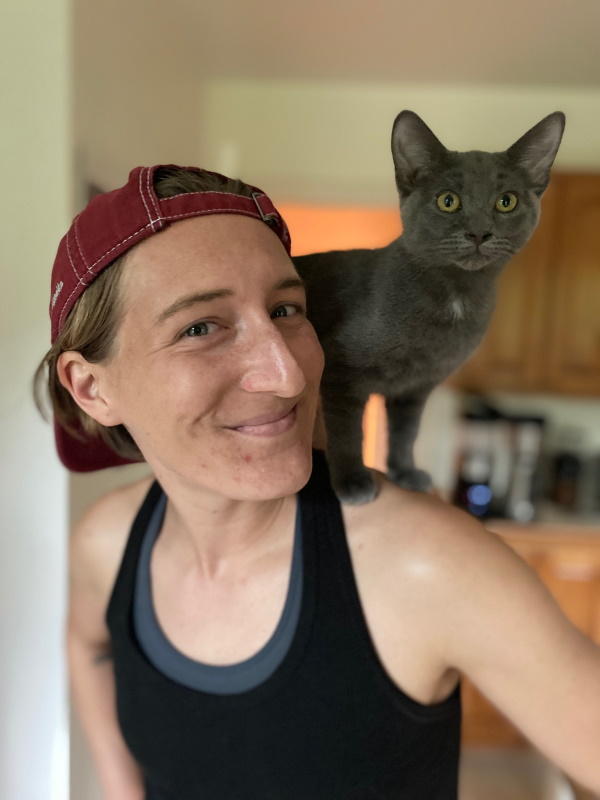
Morgan and her partner adopted their COVID kitten Meesh Meesh, who is a never-ending source of terror and joy. Their household now consists of 3 humans, 3 cats (Meesh Meesh, Kepler, and Volta), and Bino the dog.
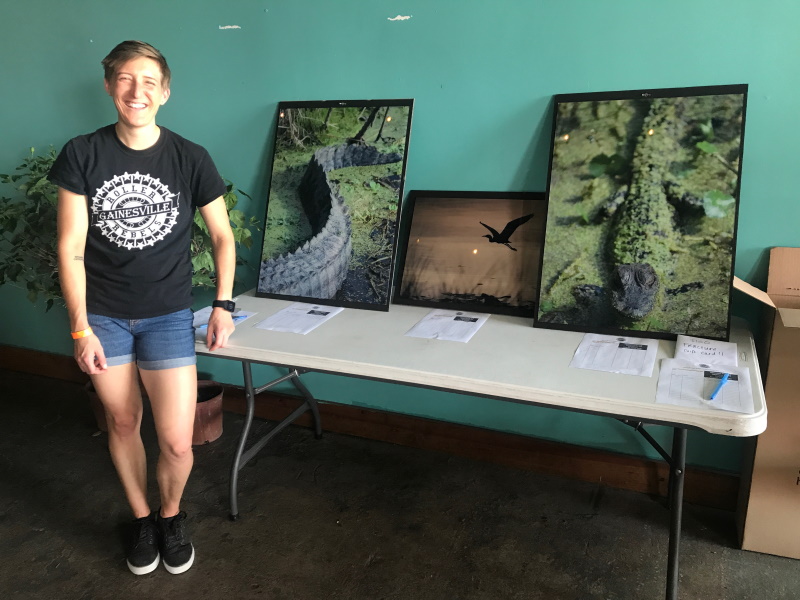
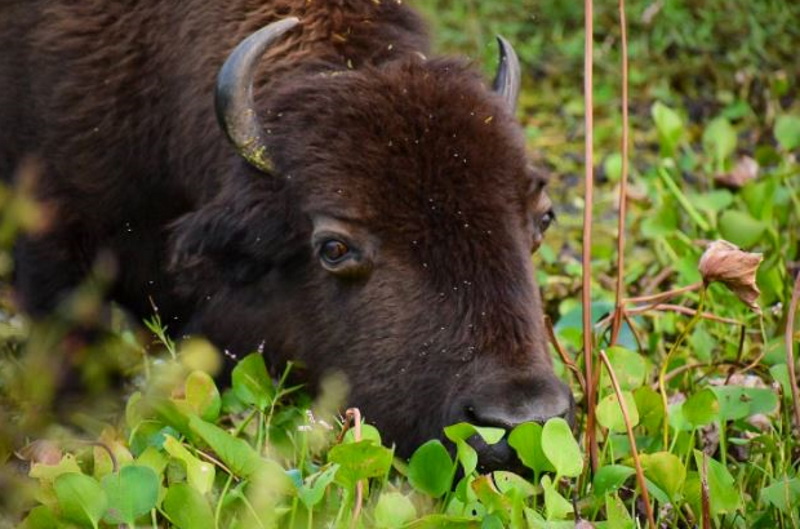
Like everyone else, Morgan dove into baking in the early days of the pandemic, but has now returned to digital art and nature photography. Morgan has also been getting into the outdoors – taking lots of walks with Bino the dog, and birding at Sweetwater Wetlands Park and Payne’s Prairie, where she recently saw the bison herd.
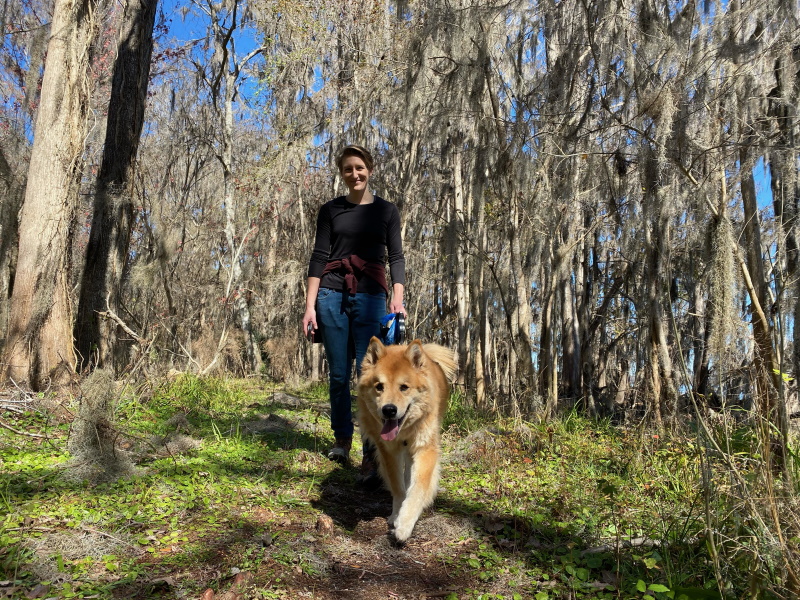
Morgan Walker, Spatial Epidemiologist
Credit: Mike Ryan Simonovich